Cleaning our Monolithic Airform

As my wife and I prepare for future exterior work on our Monolithic Dome, and to keep up with recommended Airform maintenance, it’s finally time to wash our Airform again.

As my wife and I prepare for future exterior work on our Monolithic Dome, and to keep up with recommended Airform maintenance, it’s finally time to wash our Airform again.

Jay Williams said, “I thought about building a Monolithic Dome for some months. Then I decided I had some questions and the best way to answer them was through a Workshop. It can’t hurt a thing to take the training.” He enrolled in the October 2003 Workshop. About it, he said, “The Workshop was a real eye-opener. It gave me a clear understanding. I learned a lot and I enjoyed it – both the classroom time and working at the job site. I sprayed foam, I sprayed concrete, I tied steel – I did all that stuff.”
Even though we’re in the midst of hurricane season, the memories of the 2011 tornadoes are still fresh in the minds of most people. This year will go down as the deadliest tornado year since The National Weather Service began keeping records, with more than 500 fatalities. That’s one of the reasons why Jon Thompson wrote a feature story on the protection that Monolithic Domes can offer on Architecture Suite 101

To understand the Seismic Zoning method and how it pertains to the Monolithic Dome, we must first understand what effective peak ground acceleration means and how it is measured against gravity.
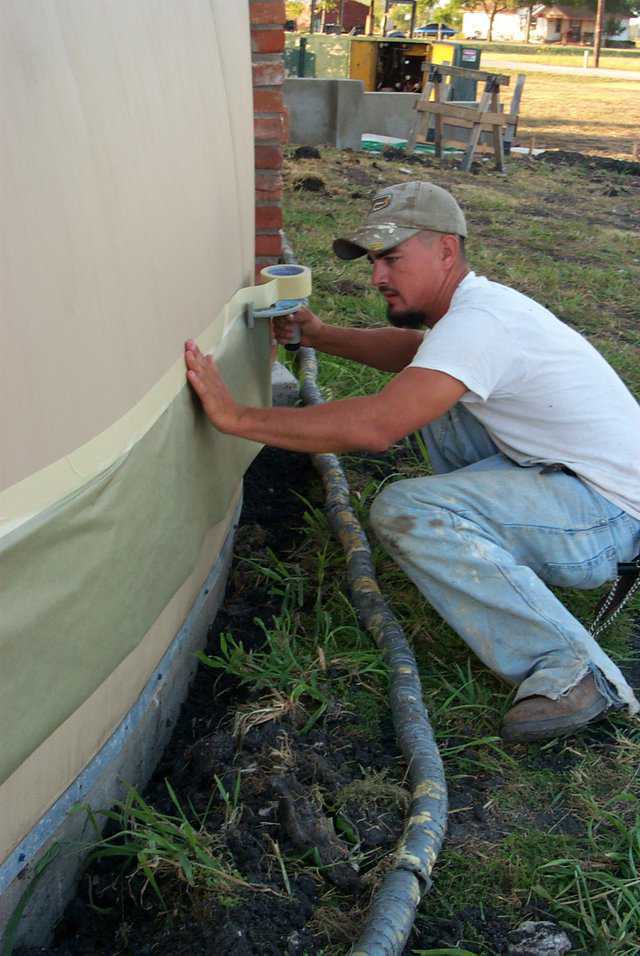
Generally, in the US, footings are not insulated. By not insulating the footing, we have a place where cold can enter our houses. Monolithic Dome builders may need to consider insulating footings of Monolithic Dome homes to provide a thermal break and reduce chances for condensation and/or mold growth.
When I started building Monolithic Domes, I wanted to know how to make the strongest possible concrete. How much and what kind of cement, water, rock, sand, admixtures, etc. should we use? I went to the Portland Cement Association for advice. I asked other shotcreters. Over the years, I have tried every mix we could think of.
Monolithic Domes make fantastic schools. Ward Huffman of the Department of Energy called them “self-replicating.” Generally, Monolithic Dome schools pay for themselves in energy savings within 20 years.
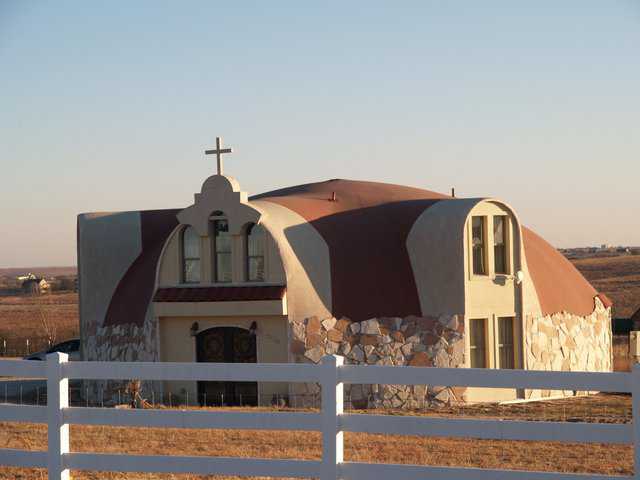
The owners of this grand dome-home have asked us not to publish their names or their dome’s exact location. We do, however, have permission to share these photos with our readers.
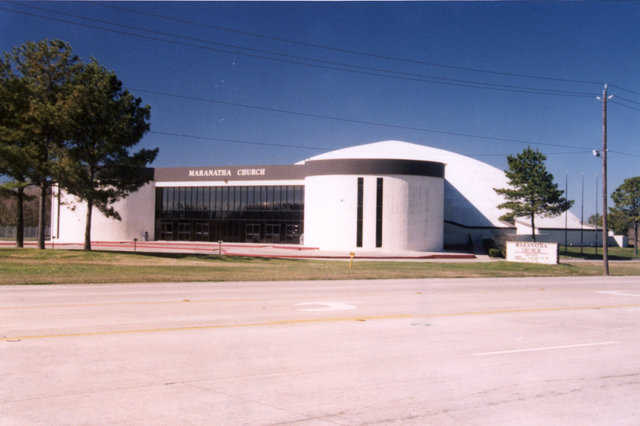
Pastor Ronnie Trice and his wife Sandy organized Maranatha Church in December 1973, initially to serve its local community of Mont Belvieu, Texas. But church membership increased rapidly, so its congregation soon outgrew the sanctuary they then used, which seated six hundred.
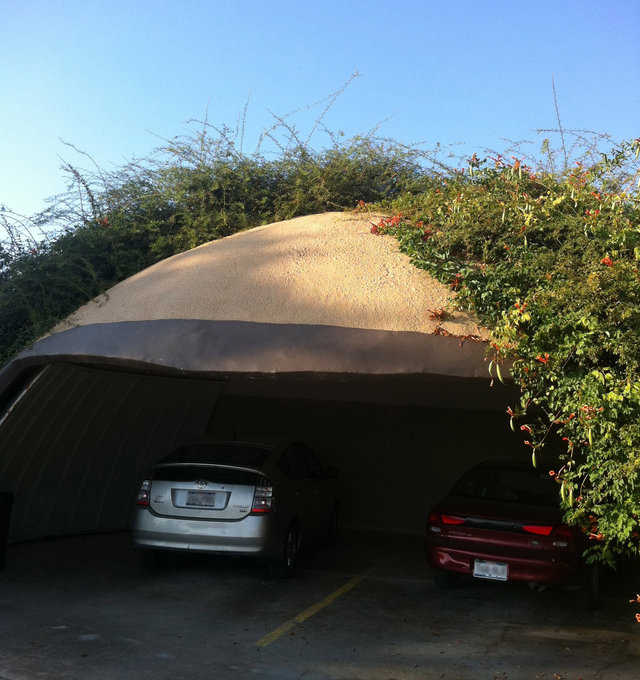
Check out nature’s way of coating a dome by scrolling through the pictures. (Click the top image and scroll thru the images and captions.) This unique way provides protection as well as beauty to the outside of your dome.
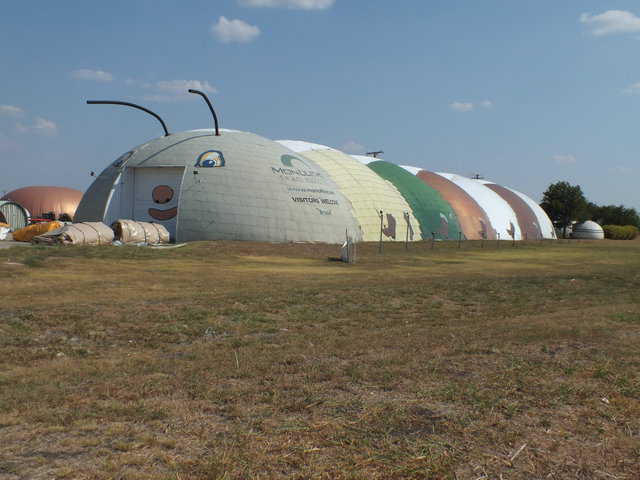
We’re having a heat wave! A tropical heat wave! When this photo was taken, we here in Italy, Texas were enduring our 60th day of daytime temperatures of 100F degrees or more! And our nighttime temperatures stay in the 80s.
It is a well known fact that if you get below the surface of the earth a few feet, the temperature tends to be very even and at a constant 55 to 60 degrees, depending on latitude. So, it does not take a genius to understand that if you could move outside air through a buried pipe, you could alter its temperature and then move it into a house where it can warm or cool the home’s interior.
Note: Kenneth Garcia, a professional engineer, and Beverly, his wife, are the proud owners of Sweet Dome Alabama, their Monolithic Dome home in New Hope, Alabama.
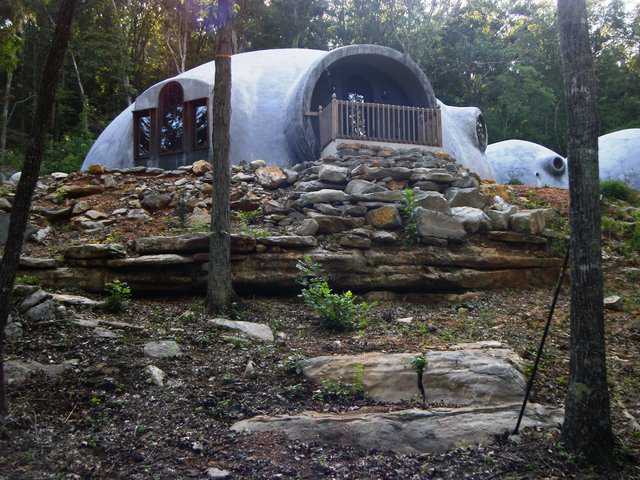
Back when their children were just kids and Beverly and Kenneth Garcia took family vacations, they discovered beautiful New Hope, Alabama. “We were then living in Mississippi, but we fell in love with the New Hope area,” Bev said. “It’s gorgeous up here – the mountains and the lake and we like to fly fish.” Then and there Ken and Bev decided that when they retired, they would relocate to New Hope.
If you want to start a fight, just ask a room full of spray concrete operators: What’s the best system for applying concrete?

Many years ago I decided I wanted a fire-suppression system in my home. I was not interested in fire extinguishers that may or may not work and seem always in the way. I wanted an actual, simple, but extremely effective water system.
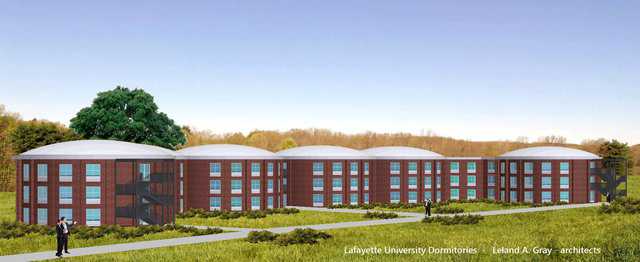
Monolithic has been a bit slow about designing and building multistory living units. We recognize the need is extremely great. In many places land is just too valuable to tie up with single-unit residences. So we have asked architects and designers to come up with multistory designs.
When a multipurpose Monolithic Dome opened in Fowler USD earlier this year, it made news. Not only was it the first dome school building in Kansas, but the Federal Emergency Management Agency funded a substantial portion of the construction costs.
In 2006 in Shokan, New York, work began on Peggy Atwood’s Monolithic Dome home, that has two intersecting sections: 40′ × 23′ and 30′ × 18′. Now Peggy has a slideshow of that construction – and a lot more. If you’ve ever wondered what all goes into the building of a dome-home, watch this slideshow. It begins with the clearing of the site to a completed, furnished, beautiful Monolithic Dome home.
It’s not often that a newsmaker captures the attention of the esteemed New York Times and the hip MTV in the same week, but that’s exactly what happened to Steve Michaels and his wife, Chris. They are the creative geniuses behind the Hobbit House of Montana, a guesthouse inspired by J.R.R. Tolkien’s book by the same name.
We have documented evidence that “Monolithic Domes”/topics/domes can survive powerful hurricanes and tornadoes, and even wildfires. But what about a catastrophic event like the end of the world as we know it? Thankfully, we haven’t had to put a dome to that kind of test, at least not yet. But dome homes are popular among survivalists, especially those who are interested in an underground shelter.
While attending the April Workshop by day, I had the fortune of dreaming by night within the comfort of a Monolithic Dome. Such immersion brought to life the ability of Monolithic Domes to fill the vast structural needs of humanity. The integration of the most advanced building materials with nature’s perfect shape excited me about the capability domes have to shelter our lives.
Two years ago, we announced the Federal Emergency Management Agency’s decision to help fund construction of Monolithic Dome tornado shelters in two Ohio mobile home parks. Together, the two domes in Licking County are providing a safe haven for nearly 500 people when severe weather strikes.
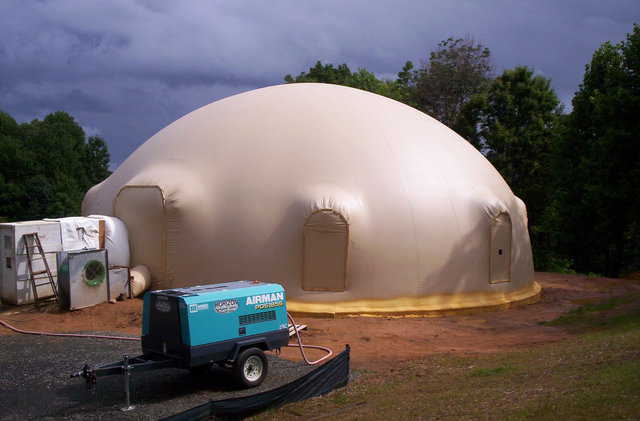
You may find this article helpful if your Monolithic Dome Airform has any stitched seams and also has a barrier material, such as foam along the exterior terminal edge of the Airform.

After the May 22 tornado devastated Joplin, a two-day workshop titled “Rebuild Joplin Strong” was organized for July 8-9 at Missouri Southern State University. David South was asked to present information about Monolithic Domes at this workshop. He and Judy, his wife, traveled to Joplin and were saddened by what they saw and heard.
This video presents comments and information from superintendents, principals and teachers of Monolithic Dome schools in several States. Some talk about the advantages of going Monolithic because of significantly lower construction costs that influenced voters to pass bonds. Others comment on the energy-efficiency, affordable maintenance, and lower insurance premiums that Monolithic Dome schools enjoy. Still other comments focus on the dome’s ability to meet FEMA standards for near-absolute tornado protection, the design flexibility of a Monolithic Dome, and its use for community as well as school events.
A large Monolithic Dome, such as a school, gymnasium or church might very well qualify as a designated disaster shelter or what the American Red Cross calls a Mass Care Facility.

$322 billion! That, says the National Education Association in its Statistical Analysis Report of June 2000 is the staggering amount it will take to fix America’s schools. Of that $322 billion, about $54 billion should be allocated for educational technology. But the remaining $268 billion is needed to repair, renovate or add to existing school facilities.
Nanette South Clark, Manager of Engineering, shares her feelings on Joplin’s tragedy and America’s severe need for disaster-resistant homes, schools, hospitals, etc. She says, Monolithic Dome schools have actually been mostly funded by FEMA because they can be tornado shelters for entire communities. There is no reason that every town in “Tornado Alley” couldn’t have a Monolithic Dome Tornado Shelter. Yet people are so resistant to change (for the better even) that when it comes right down to it, many choose metal buildings and wood buildings because they don’t want something round in town…."
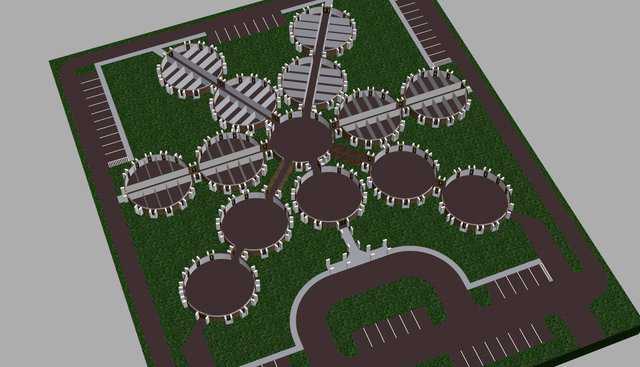
As a professional with experience in the best practices of gerontology, psychology and human relations both in Europe and America, I believe that Old Age should be as enjoyable as any other season of human life. The Future of Senior Living Project has a mission to create, implement and continuously develop an innovative concept for happy and healthy aging in a safe and comfortable home and family environment, with opportunities for community senior activities and information resources for social, medical, financial and other services applicable to the elderly.

Dade County, Georgia was one of many areas of the southern United States hit by deadly tornadoes this past spring. An EF-3 tornado struck the area on April 27, followed by two smaller EF-1 twisters. Although several homes were destroyed, one resident weathered the storms with no worries at all.

On April 27, 2011, an F3 tornado, with winds between 158-206 mph, hit the small town of Durant, Mississippi, including the Monolithic Dome home and garage of Mr. and Mrs. Lee Avery.

At about 5:38 on a hot, humid afternoon, an EF4 tornado – possibly an EF5 – with winds of about 200 mph hit little Blanchard, Oklahoma and its 3225 residents. Fortunately unlike some of its neighbors hit by the same spate of tornadoes, Blanchard suffered no fatalities. But some people were hurt seriously and had to be hospitalized; 200 homes were either destroyed or damaged; vehicles were overturned and flung about; giant trees and shrubs were twisted and uprooted; heavy debris was blown hither and tither.

The tornado-resistance of Monolithic Dome structures will be one of the featured topics at the Rebuild Joplin Strong workshop scheduled for July 8 and 9 on the campus of Missouri Southern State University. David B. South, president of the Monolithic Dome Institute, is slated to speak at the event, which is designed to bring survivors, planners, and builders together with experts in storm-resistant, green construction practices.
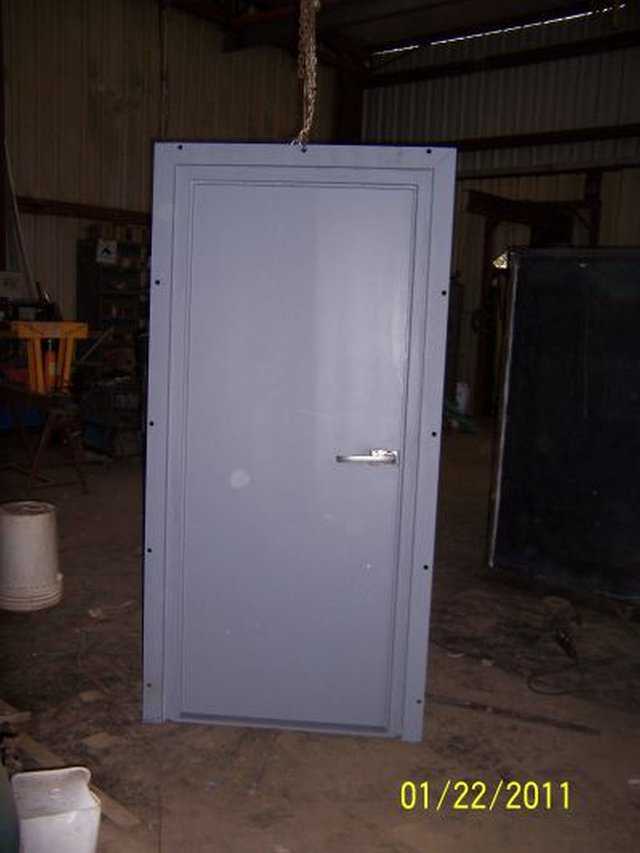
For several years Monolithic has been searching for an affordable door whose ability to resist tornado-force winds matched that of a Monolithic Dome. “We did not have a problem finding doors with the integrity we wanted,” said David South, president of Monolithic. “We found them, but they were in the $5000 to $7000 range. Put a few of those on a building and they really skyrocket the price of a project. We needed a door with two advantages: tornado-resistant strength and affordability. About a year ago, we found both in the Tornado Tamer.”

The Energy Detective is a device that lets you monitor the electric usage of your home. I bought one to track the energy usage of my dome-home and windmill. I was very surprised to find so much power in such a small device. According to the manufacturer of The Energy Detective (TED), just knowing what your house is doing and taking small steps to avoid using so much will drop your power bill 13% on average.

Imagine hitting the road, and going in search of new discoveries and then telling your story to a worldwide audience. That’s what Aaron Fown is doing on The Trip for Life

Monolithic is on Facebook! The best part is that you do not have to have a Facebook page yourself to see what all the buzz is about. Check it out and read comments and discussions about the Monolithic Dome, THE Twenty-First Century structure!
Oklahoma is home to more Monolithic Dome schools than any other state in the nation. It will soon have one more as Dale Public School completes construction on a new steel-reinforced concrete dome facility that will serve as an events center and cafeteria. The 109-foot-diameter building is scheduled for completion in January 2012.
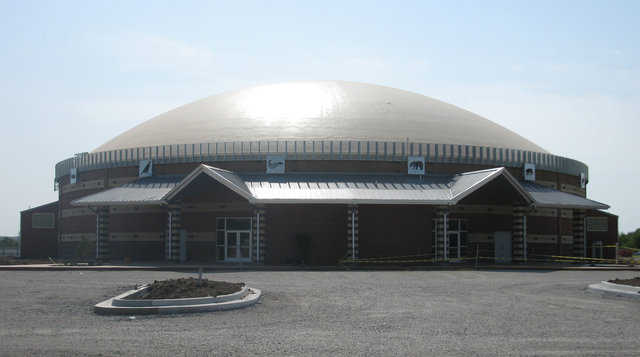
The Muscogee (Creek) Nation is planning a grand opening for its new $4 million Monolithic Dome multipurpose facility in Okmulgee, Oklahoma.

Authored by architectural designer and artist Robert Bissett, this book takes the reader through all the stages required to produce a functional and attractive set of working drawings. The prospective home owner will learn how to start with a pencil-drawn floor plan, build a 3D computer model and produce and publish a complete set of house plans.

To dome or not to dome? That was my question. I had to make a decision about what to rebuild. Should I go with the traditional stick-built home or look at the alternative building techniques, which were becoming popular all over the country? I considered straw bales, earthship, earthbag, and several other options that would yield what I really wanted: an energy-efficient home.

In early 2010 my wife Maddy and I, as owners of a dome under construction, submitted our original “Cold Study” article to Monolithic. Now that we’re living in our furnished dome, we wanted to share more energy consumption data, again concentrating on the colder months in SW Virginia. These data are reported in the attached tables.

When Karen and Dan Tassell of Magnolia, Texas decided on a Monolithic Dome home, they agreed that Karen would do all the decorating, inside and out, and Dan would be in charge of construction details.

For 16 months, the construction of Jerri and Darrell Strube’s new Monolithic Dome home, 50 feet in diameter and 23 feet high, in Marlow, Oklahoma went relatively smoothly. Once Andy Barnes, owner of Alpha Omega Builders in Kingston, Oklahoma, completed the dome shell, Jerri and Darrell began doing the finishing. And all continued going rather well – until January 12.
At a presentation to a school board, I ran into an interesting situation. One of the school board members said, “It is extremely important that we bid this project out.” He was inferring that if they selected a Monolithic Dome they wouldn’t be able to bid it. I explained that there were several people who could bid the Monolithic Dome and that every single piece of the construction of any school building had to be bid. On further reflection, I realized how fickle the bid process is.

Roger describes their dome-home as “very energy efficient.” He said, “A couple of years ago, before the rates had gone up, I was happy to tell people that my highest (monthly electric) bill was $199. That was pretty amazing for a 3000-square-foot, all-electric house in Mesa.”
While most Americans are focused on the devastating tornadoes that have been ransacking the nation, those who live in coastal areas have another type of natural disaster on their minds. Hurricane season began on June 1, and meteorologists are predicting that it could be a much more active than last year.
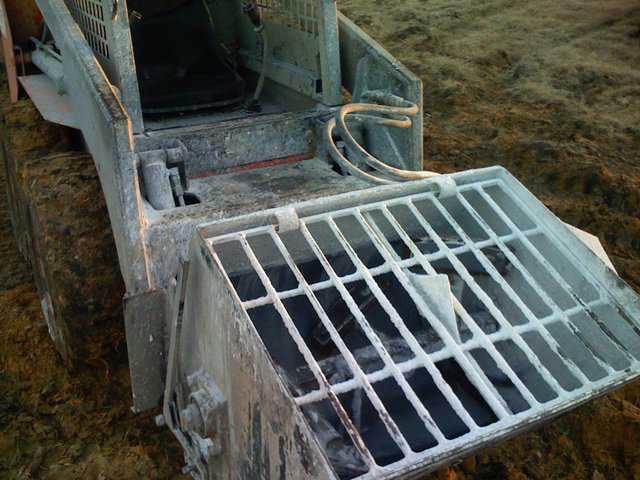
Attention all Masons:
Put down your shovels and increase your productivity, with the
Monolithic Concrete and Mortar Mixer.
Sadly, it’s official. This year will go down as the deadliest tornado year since record keeping began, according to The National Weather Service. More than 500 people have died in tornadoes in 2011, with nearly half of the fatalities occurring in Alabama. Missouri ranks second with 139 deaths from the Joplin tornado alone.